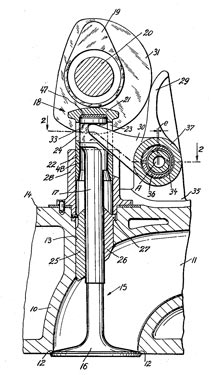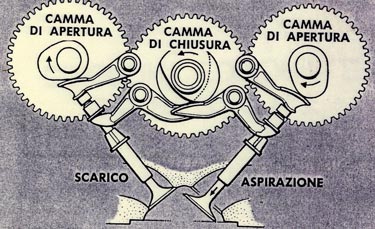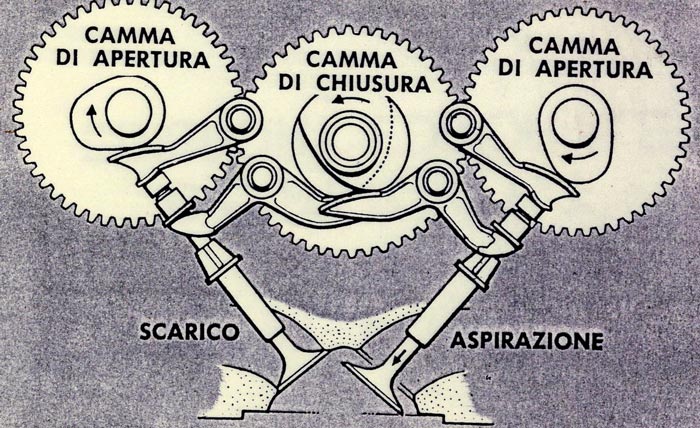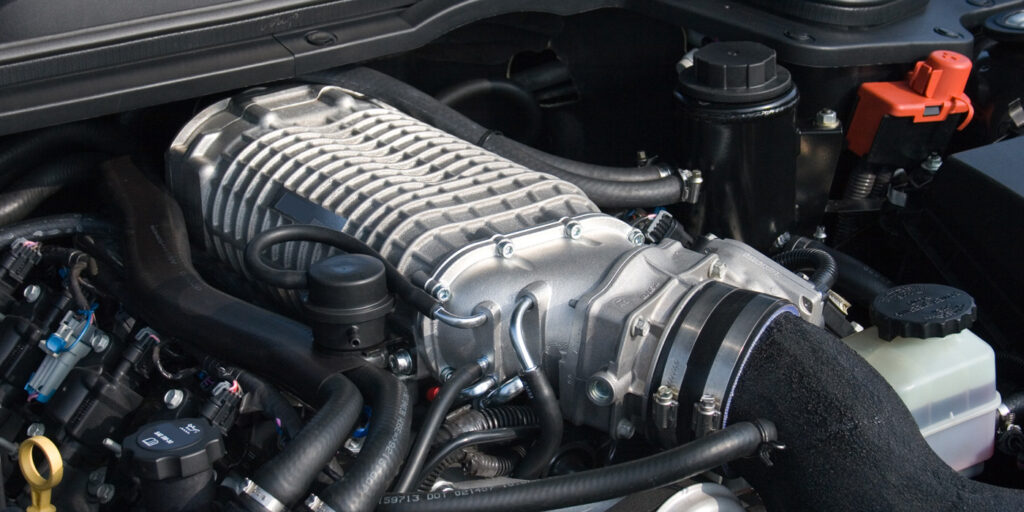 In the 1950s, engineers wanted to increase engine speed so more power could be produced. But, they had reached the limits of valve spring technology. Since the science of valve springs was in its infancy, higher engine speeds would cause the valve spring to float and cause the valve to not follow the lobe of the camshaft.
In the 1950s, engineers wanted to increase engine speed so more power could be produced. But, they had reached the limits of valve spring technology. Since the science of valve springs was in its infancy, higher engine speeds would cause the valve spring to float and cause the valve to not follow the lobe of the camshaft.
One solution was to get rid to the springs all together. Since the turn of the 20th century, inventors have been coming up with new methods to get rid of the poppet valve springs.
The result was the invention of the desmodromic valve system. Roughly translated in French and Italian, desmodromic means, “bound to a track.” Which is roughly what the system does with the valve and camshaft.
Desmodromic valve systems eliminated the valve float problem by using cams and levers to actuate the motion of the valve. This means that you do not have a camshaft fighting against the valve springs. In theory, this would allow for limitless engine  speed. In practice, it was found that having to deal with the extra mass and elasticity of the levers and cams did create problems at higher engine speeds.
speed. In practice, it was found that having to deal with the extra mass and elasticity of the levers and cams did create problems at higher engine speeds.
The only desmodromic system application for a road vehicle has been on Ducati motorcycles. However, the Mercedes Benz W196 race cars also used desmodromic valves in the 1950s. What really killed the system was better steel for the valve springs that was made available in the 1960s.












